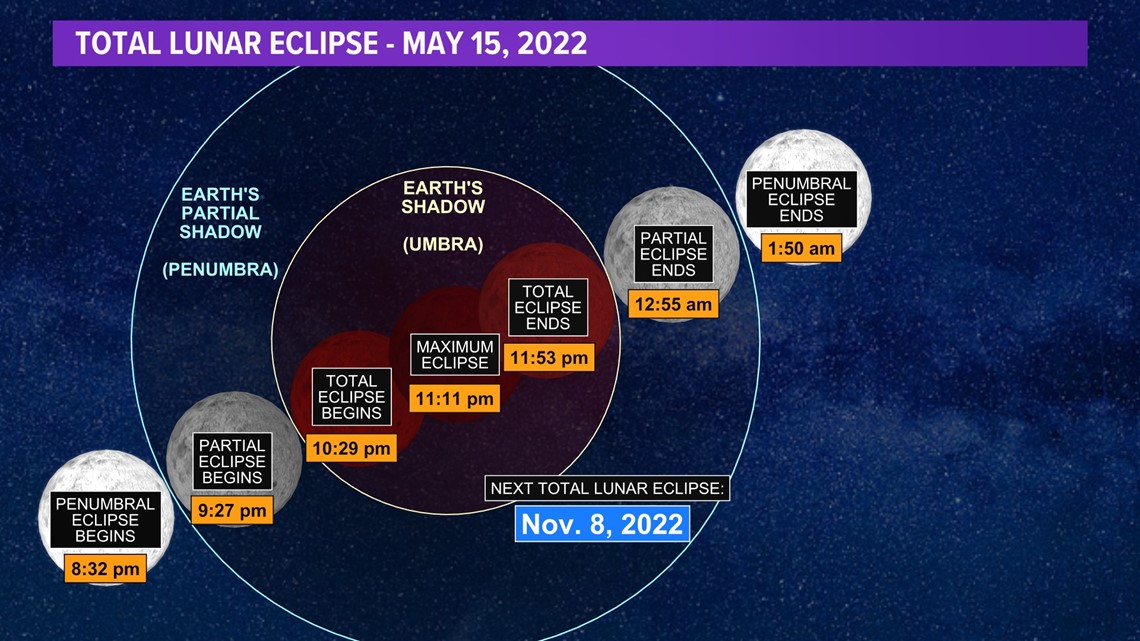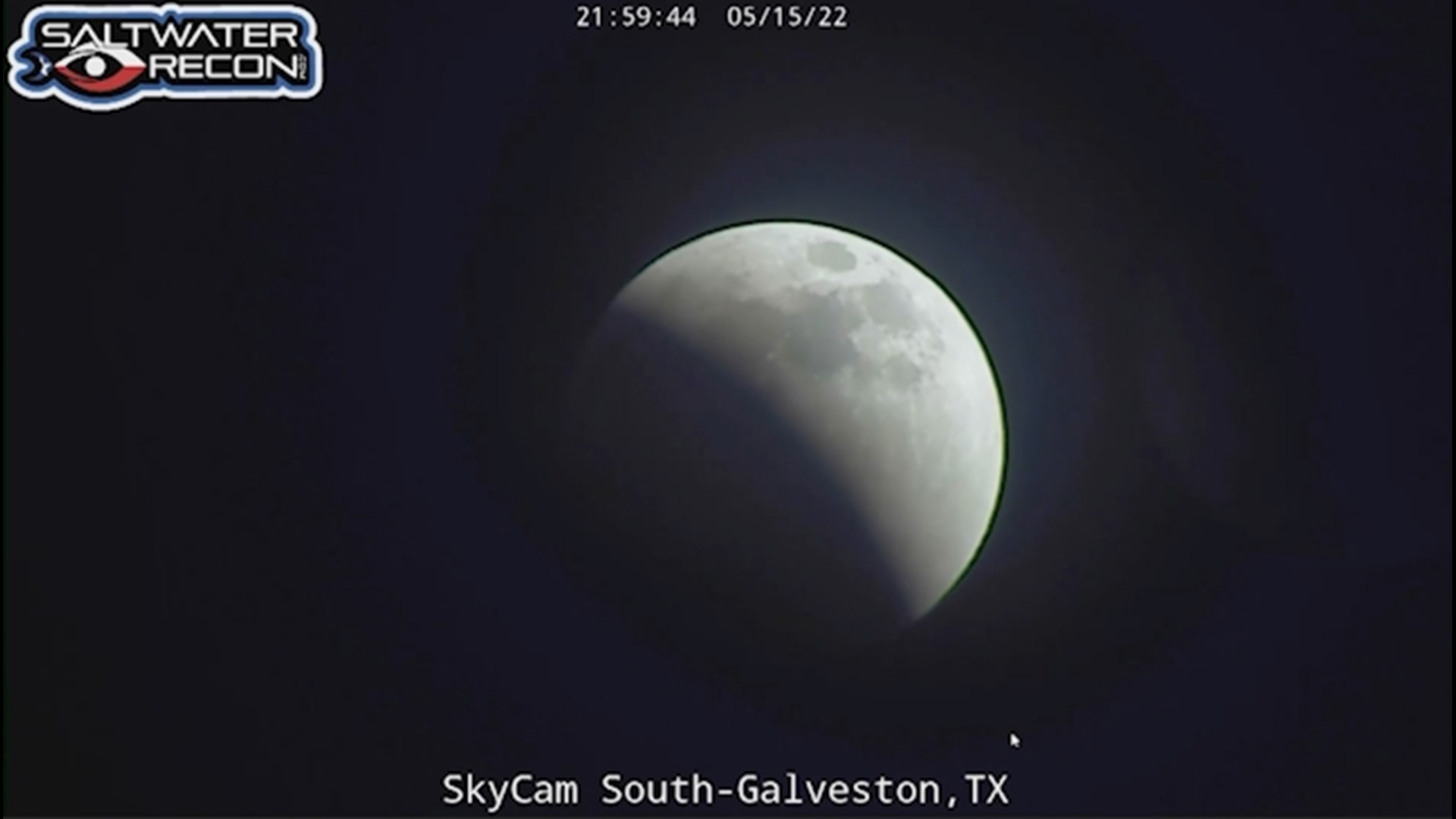HOUSTON — The moon is about 240,000 miles away, but it felt a lot closer in Houston on Sunday night as the city was gifted a view of a magnificent lunar eclipse.
It's what everyone was talking about at Rice University's observatory and at the Houston Museum of Natural Science's planetarium.
At HMNS, operator William Yokely can take you there faster than the speed of light.
“We can do all sorts of fun stuff here,” he said. “It is effectively pretty much as close to an actual starship as we can get. The only thing illuminating the surface of our moon is just that eerie red glow from the earth’s atmosphere.”
The Super Flower Blood Moon and the mystery of why and how the moon turns red have fascinated humans for thousands of years.
Lunar eclipses are more common than solar eclipses, which you need protective glasses to see. But both are events that are hard to take your eyes off.
“Ancient astronomers have used the sky, the stars, the movements of the planets for thousands of years – there’s just something ... something curious," Yokely said.
As watchers waited on the totality of alignment on Sunday night, they couldn't help but think that there's something about looking out to space that's naturally human.
"There’s something about looking out at space that is innately human," Yokely said. "There’s something innately curious about these events when they happen.”
Here's a timeline of the eclipse:



